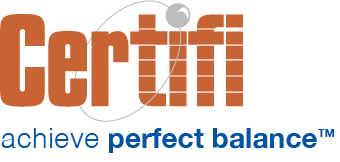The Consolidated Appropriations Act was signed into law in late December of 2020 and included the No Surprises Act. Congress designed the act to bring more transparency to health care. Congress set the Act’s effective date as Jan. 1, 2022.
Most discussions of the Act focus on how it protects patients from receiving surprise medical bills for out-of-network services at in-network facilities as well as gaps in emergency service coverage. But the Act also had several other transparency-related requirements that can impact health insurers. We’ll provide a No Surprises Act Summary of two of those: Advanced Explanation of Benefits and Insurance ID requirements.
Advanced Explanation of Benefits
The No Surprises Act requires health plans to send members an Advanced Explanation of Benefits (EOB) in certain instances:
- Whenever they schedule a health care service at least three business days in advance of the service
- At a member’s request if the service has not yet been scheduled.
If a provider sends a health plan a “good faith estimate” or a member requests an estimate directly to the health plan, an insurer must send the member an Advanced EOB. Additionally, if the scheduled appointment is at a minimum of 10 days out, the plan must send an Advanced EOB within three business days of the notification. If the service occurs in less than 10 days, an insurer must send an Advanced EOB within 1 business day.
The Advanced EOB must have the following 8 items:
- Information about whether the provider/facility is in-network
- If the provider is in-network, insurers must include contract rate information
- If out-of-network, the health plan needs to include information about accessing in-network providers
- The “good faith estimate” from the provider or facility. That information should include likely billing and diagnostic codes.
- A “good faith estimate” of what the plan will pay
- An estimate of the member’s cost-sharing amount
- A “good faith estimate” of how the member is progressing toward their plan limits on things like deductibles and out-of-pocket costs
- The Advanced EOB should indicate prior authorization requirements if any.
- A specific disclaimer that the Advanced EOB is an estimate based on information known at the time and could change.
- Any other information or disclaimers the health plan deems appropriate.
Health insurers must deliver Advanced EOBs by mail or electronic methods, whichever the member prefers.
What Services Require an Advanced EOB?
The No Surprises Act doesn’t delineate which services require Advanced EOBs. As a result, we assume that any service scheduled or any request by a member requires an Advanced EOB. However, in a letter to the Center for Medicaid and Medicare Services, the American Hospital Association has requested that CMS only require Advanced EOBs for routine and low-variance services. Any future rulemaking will likely clarify if the No Surprises Act applies to all services or a specific set of services.
Advanced EOB Timeline
Though initially expected to go into effect Jan. 1, 2022, in a recent Frequently Asked Questions document about the Consolidated Appropriations Act, the Departments of Labor, Health and Human Services, and Treasury indicated that due to the technical infrastructure required to implement Advanced EOBs and provider good faith estimates, they will not enforce the Advanced EOB requirements on Jan. 1, 2022. Instead, they will deliver additional guidance — including potential data exchange specifications – in the future, likely after Jan. 1, 2022. As a result, likely, Advanced EOB enforcement will not happen in the near term.
The American Hospital Association’s letter to CMS indicates their preference for a single technology and process standard and that developing that standard would take at least 2 years.
Member ID Requirements
The No Surprises Act also included some requirements designed to improve transparency around in-network and out-of-network costs. One of those is the requirement that member ID cards include:
- All plan deductibles, including in-network and out-of-network amounts
- Maximum limits on out-of-pocket costs, including in-network and out-of-network limits
- A phone number and web address for consumer information, including information about in-network providers.
Like the Advanced EOB requirements, the No Surprises Act Member ID requirements were scheduled to go live on Jan. 1, 2022. However, the Departments of Labor, Health and Human Services, and Treasury indicated in their frequently asked questions document that they will not issue regulations about ID cards before the effective date. Member Id cards deemed to be “reasonably designed to provide the required information” will be considered compliant. The frequently asked questions document indicates that a card that has a QE code that links to additional applicable deductibles and maximum out-of-pocket limits is an example that would meet the reasonable design threshold.
What Should Health Plans do to Comply with No Surprises Act Advanced Explanation of Benefits and Member ID Requirements?
Though it seems unlikely that the government will enforce these requirements until they issue clarifying regulations, health insurers should start strategizing what technology and processes they need to implement in order to comply. In their Frequently Asked Questions, the departments indicated that after finalizing rules and regulations, adequate time will be given before they take enforcement actions. The departments failed to provide specific timelines, however.
Certifi’s health insurance premium billing and payment solutions help healthcare payers improve member engagement while reducing administrative costs.



